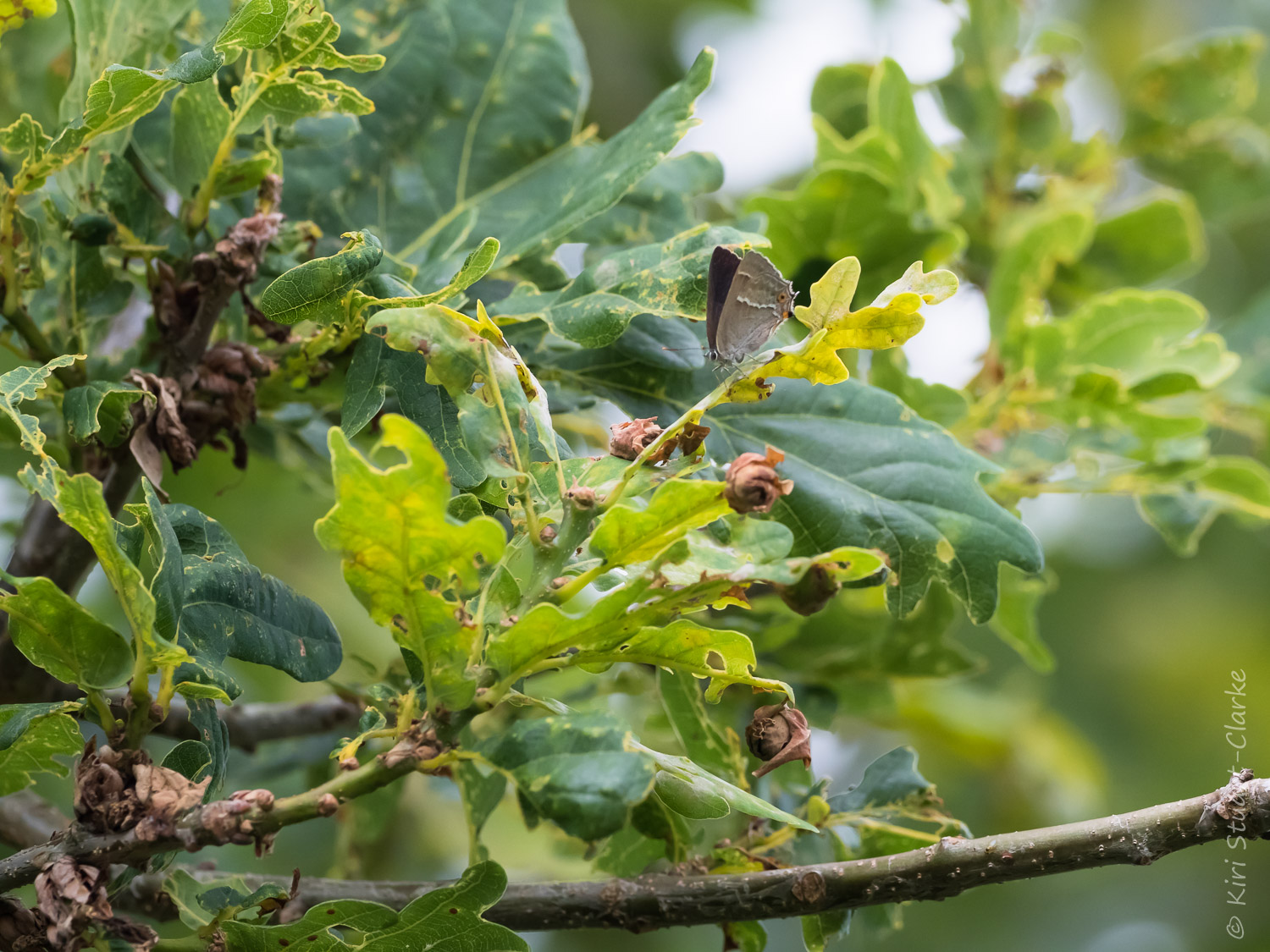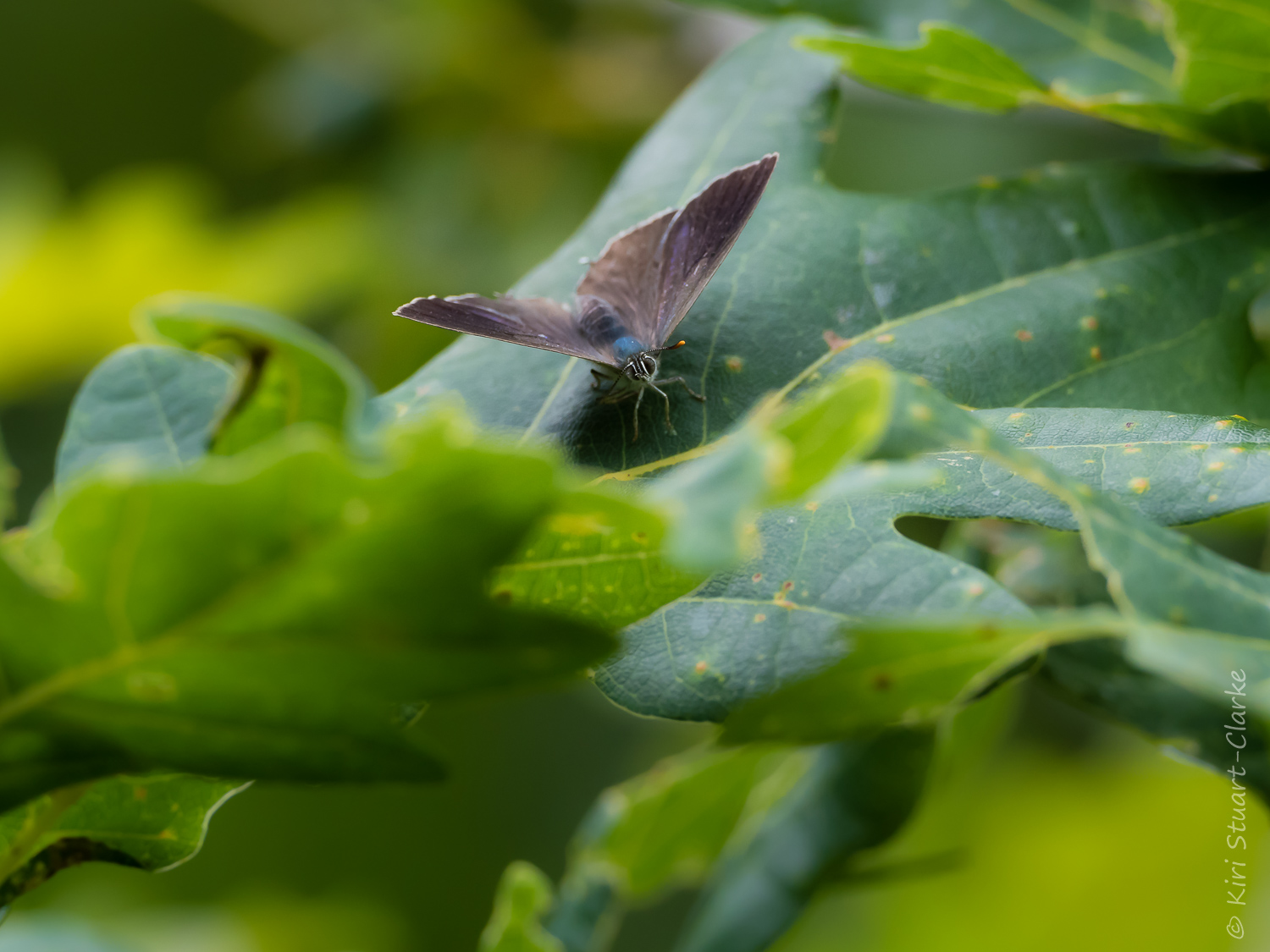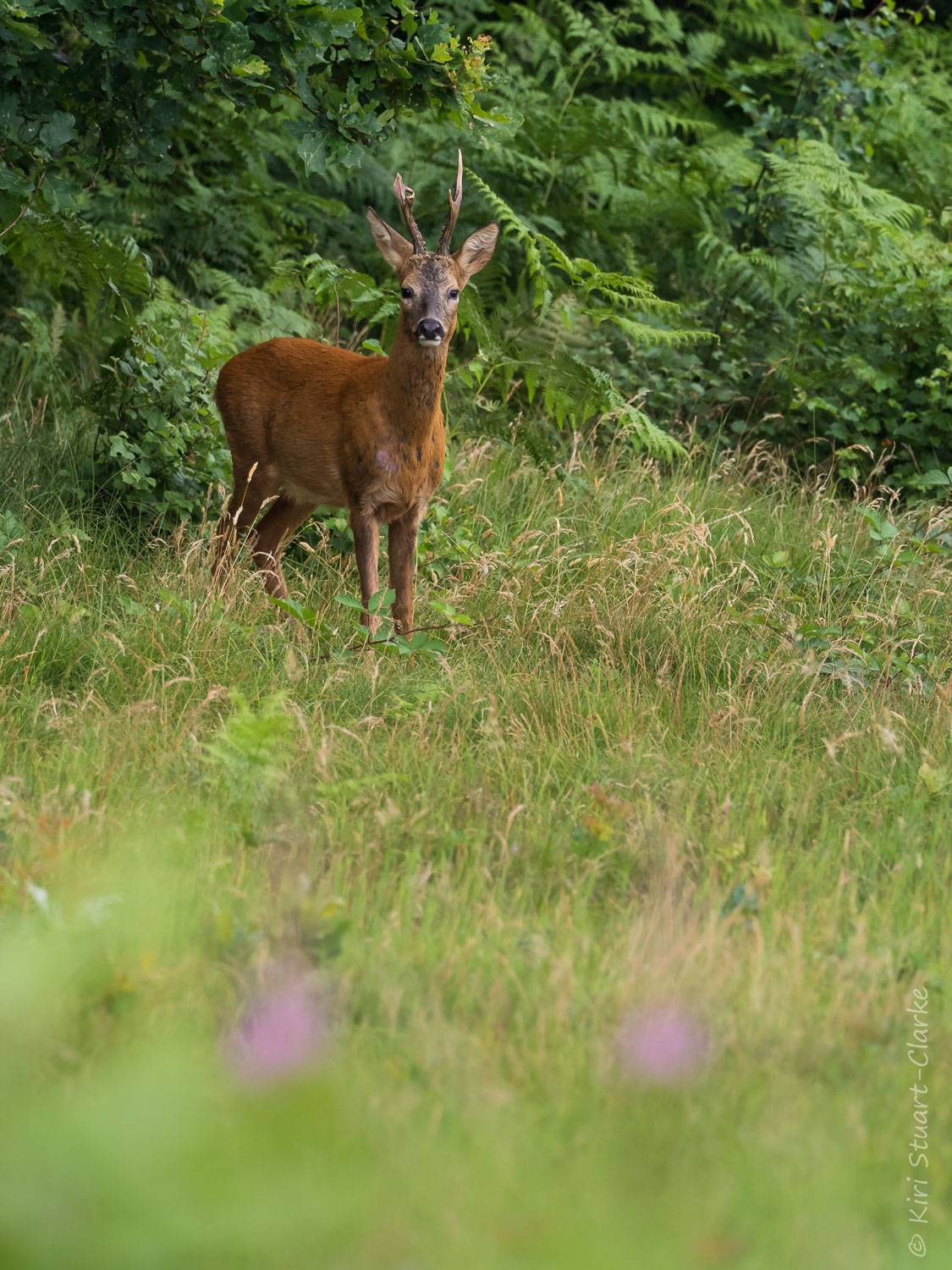The colour purple became my leitmotiv during early July. It is the season of the purple butterflies and therein lies a tale of mystery and obsession...
The Oak tree canopy is a habitat for both Purple Emperor and Purple Hairstreak butterflies, which both feed on aphid honeydew
Two very different, yet equally enigmatic, purple butterfly species are on the wing towards the end of June into mid-July. Though very different in fame and stature, both share two things in common: a fondness for the heady heights of mature Oak tree canopies in deciduous woodland and a strong reputation for elusiveness and ability to evade the gaze of even the most determined of butterfly seekers.
Since being drawn into the world of butterflying I've discovered that, since time immemorial, avid butterfly chasers have gone temporarily a little doolally at this time of year. The hysteria is all over a certain famous, purple-cloaked member of the royal family who is not, officially at any rate, currently resident in Norfolk - the magnificent Purple Emperor.
Known affectionately to his acolytes as "his Majesty" or sometimes simply "Iris", the Purple Emperor is neither Britain's largest butterfly (our very own Norfolk Swallowtail), nor the rarest (the once extinct, recently reintroduced Large Blue), nor even the brightest (arguably the Silver-washed Fritillary) so this seemingly bizarre Purple Emperor obsession had been puzzling me for some time. Just what quality is it that bewitches them all? Is it the dramatic colour purple? Their reputed vigorous flight and aggressive behaviour? Or some other mysterious factor altogether ....?
After an inspiring talk by renowned butterfly conservationist and Purple Emperor advocate Matthew Oates at Norfolk Butterfly Conservation's AGM back in 2016, I became intrigued and not a little bewitched myself. In a bid to sate my curiosity and discover the obscure reason for the Purple Emperor's celebrity status for myself, I started planning a field trip to visit his Imperial Majesty's haunts, mature Oak and Sallow woodland rides.
Alas fate was not on my side, despite attempts to make visits to Fermyn Woods in Northants, Wood Walton Fen in Cambridgeshire or Theberton in Suffolk, life events have intervened and scuppered my plans well and truly for this year. Perhaps Iris is to be my new five year nemesis butterfly, who knows.
With my ability to range much curtailed, I was crestfallen and deeply disappointed. But there was still the second less famous, but to me equally elusive, purple butterfly to discover: the Purple Hairstreak butterfly, Neozephyrus quercus. And it lives much closer to home.
Although much smaller, the Purple Hairstreak butterfly shares a surprising number of characteristics in common with its larger Imperial cousin. As suggested by its Latin species name "quercus" it too favours mature deciduous oak woodland and so is also highly elusive (and under-reported) as a result to its habit of dwelling up high amongst the tree canopy. There it lives on honeydew produced by aphids and only rarely descends from the "throne" for the odd sip of bramble nectar.
A Purple Hairstreak butterfly perched on an Oak tree leaf near the edge of Syderstone Common, Norfolk
While laid up I did my research thoroughly. Purple Hairstreaks being far more widespread than his majesty, I was able to find some promising local locations in Norfolk, and had in fact already experienced my first brief glimpse of a old faded and tattered Purple Hairstreak on a dog walk at Holkham Hall one August a few years back. I took a punt on a very short run up to the nearby Syderstone Common nature reserve, on the edge of North Norfolk coastal AONB. Its a large reserve of lowland gorse heathland, an SSSI that is famous for its Natterjack toad population, but not all that much else, in fact a previous visit had left me visually underwhelmed. This time however the reserve was transmuted into a spectacular sea of vivid fuchsia pink willowherb flowers swaying in the gentle breeze.
Essex Skipper butterfly perched on a Rosebay Willowherb flower spike
My fieldcraft skills must have improved somewhat as I was delighted to spot an active Purple Hairstreak quite soon into my visit. There it was, a small grey blob fluttering away right up high in the treetops, initially silhouetted against the cloudy sky. Its flight was erratic and it was hard to keep track as the butterfly flitted amongst the oak treetop and nearby birches in the mature woodland circling this now spectactularly beautiful reserve.
After spotting my Hairstreak's "Master" Oak I stayed for some time, craning my neck to try to spot this diminutive butterfly amongst the oak leaves. Eventually one dropped a little lower and permitted a quick shot before circling up high again in a cluster of nearby Birches.
On my way back to the car I spotted a beautiful young buck Roe Deer, who paused, checked me out for a little while then barked at me before trotting off back into the Oak woodland, a beautiful end to my successful visit. Although my sightings had been distant and tantalising, I had bagged my first purple.
Perhaps the abiding memory for me is not so much finally photographing my first purple butterfly, but rather Syderstone Common nature reserve itself, which was a natural habitat at the peak of its mid-summer glory and afforded a sensory firework display of wildflower delight at every turn.
Visually the abundant vibrant pink Rosebay Willowherb flower spires intermingled with creeping carpets of rich yellow Tormentil, while the heady scent of rambling native Honeysuckle hung in the air and bramble in full bloom. Every plant seemed to be alive, swaying in the breeze and dancing with a host of orange Skipper, Ringlet and Meadow Brown butterflies flitting about into the distance as far as the eye could see.
As for purple Royalty... I must now be patient, wait and bide my time till 2018 brings a whole new season and fresh opportunity for his Imperial Highness to ensnare me as subject.
We shall see...
Vivid pink Rosebay Willowherb can be spectactular when in full bloom
A young Roe Deer buck on Syderstone Common, Norfolk




